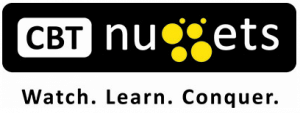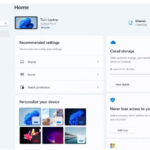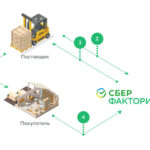Год выпуска: 2007
Производитель: CBT Nuggets
Автор: Anthony Sequeira
Продолжительность: 08:33:29
Тип раздаваемого материала: Видеоурок
Язык: Английский
Стоимость: 1999 рублей
Описание:
Designed for IT professionals who work in complex computing environments of medium to large size companies, Microsoft exam 70-293, “Planning and Maintaining a Microsoft Windows® Server 2003 Network Infrastructure” is a core networking system requirement for the MCSE (Microsoft Certified Systems Engineer) on Microsoft Windows® Server 2003 certification. Certified MCT and MCSE, VTC author, Brian Culp, shows users real world network solutions, as well as academic solutions to help users take and pass the MCSE 70-293 exam. He discusses the various server roles and availability, IP addressing, network infrastructure and security, as well as Internet connectivity strategy. This tutorial is essential for anyone considering tackling the MCSE 70-293 exam.
[wpspoiler name="Подробное описание" ]
Server Roles
Tutorial Overview (05:49)
Server 2003 Versions (05:16)
Understanding Server Roles (05:16)
Domain Controllers (04:17)
Single Master Roles (05:16)
File and Print Servers (04:14)
DHCP/ DNS/WINS Servers (04:12)
Web Servers (04:17)
Application Servers and Terminal Servers (04:50)
Maintaining IP Addressing
Understanding Network Protocols (05:59)
TCP IP Basics (05:45)
IP Addressing (04:29)
IP Rules (02:43)
Binary Addressing (05:14)
Address Classes (06:26)
IP Address Rules (06:51)
Classless Internet Domain Routing (03:04)
Automatic Private IP Addressing (05:07)
Using an Alternate Configuration (03:47)
Subnetting/Supernetting (06:58)
Subnetting Shortcuts (05:59)
Installing DHCP (05:24)
DHCP Lease Process (05:12)
Authorizing/Client Reservations (03:58)
Manage DHCP Options (04:20)
DHCP in a Routed Environment (05:58)
Configuring DHCP Relay Agent (03:58)
Using Superscopes (04:55)
Network Infrastructure
Resolving a Host Name (05:58)
Recursive and Iterative Queries (03:57)
Reverse Queries (03:39)
Installing the DNS Server Service (05:05)
DNS Server Roles (05:44)
Manage DNS Zones (04:05)
Stub Zone (02:59)
DNS Server Options (06:46)
Creating a Reverse Lookup Zone (02:40)
Resource Records (05:54)
DNS Forwarders (03:40)
Implementing Dynamic DNS (04:04)
Integrating DNS and Active Directory (04:00)
Modifying a Zone (04:45)
Aging and Scavenging (05:36)
Monitoring and Management (04:29)
Delegating Zones (06:25)
Migrating DNS Information (03:54)
Integrating Windows and UNIX (04:41)
Understanding NetBIOS Names pt. 1 (04:07)
Understanding NetBIOS Names pt. 2 (03:34)
Understanding WINS (04:43)
Planning WINS Replication (05:27)
Adding a WINS Replication Partner (06:41)
Static WINS Entries (02:51)
WINS Database Backup (03:20)
Troubleshoot NetBIOS Resolution (05:13)
Troubleshoot Host Resolution (03:56)
Routing and Remote Access
Understanding Routing (05:12)
Selecting Connectivity Devices (05:28)
Configuring RAS (05:21)
Configure a Remote Access Client (05:17)
Remote Access User Authentication (05:11)
Authentication Protocols (06:22)
Internet Authentication Service (04:59)
Configuring the IAS Server (05:58)
Remote Access Policies (05:53)
Default Remote Access Policies (06:32)
Create a Remote Access Policy (05:29)
Manage Routing Tables (07:00)
Interfaces/Devices/Ports (03:29)
Manage Routing Protocols (06:17)
Demand Dial Routing (06:00)
Configuring NAT (06:04)
Configuring a Firewall (06:11)
Internet Connection Sharing (04:58)
Setting Up a VPN (06:17)
Router to Router VPN (04:56)
Secure Callback and Caller ID (03:58)
Remote Access Account Lockout (04:42)
Multilink and BAP (03:33)
Configuring Remote Assistance (04:44)
Using Remote Desktop (03:14)
Remote Desktop Security (05:56)
Troubleshoot RAS (04:10)
Internet Connectivity Strategy
Connecting the LAN to the Internet (03:48)
Network Address Translation (05:28)
Internet Connection Sharing (03:50)
Wireless Access Considerations pt. 1 (02:52)
Wireless Access Considerations pt. 2 (04:21)
Wireless Encryption and Security (05:22)
Using the Connection Manager (01:51)
Creating a Service Profile (06:46)
Customizing Service Profiles (05:02)
Maintaining Network Security
Identifying Security Requirements (04:57)
Principle of Least Privilege (04:28)
Understanding Security Templates (04:46)
Configuring a Security Template (03:21)
Security Configuration and Analysis (04:15)
IPSec Basics (05:55)
Enabling IPSec (05:03)
Configuring IPSec Policy (04:22)
IPSec Policy Rules (04:22)
IPSec Policy Example pt. 1 (04:26)
IPSec Policy Example pt. 2 (04:17)
Using IPSec Monitor (03:20)
Resultant Set of Policy (06:29)
Security Infrastructure
Security Overview (04:31)
Using NTFS Permissions (03:07)
NTFS Permission Behavior (04:54)
Permissions with the Command Line (03:07)
Combining Share and NTFS Permissions (05:23)
Effective Permission (02:04)
Securing the Schema (06:30)
Creating an Audit Policy (06:11)
Reviewing Audit Policy (04:08)
Microsoft Baseline Security Analyzer (02:01)
Creating a Baseline Analysis (04:16)
Software Update Services (02:31)
Using SUS (03:28)
Public Key Cryptography (04:42)
Understanding Certification Authorities (05:12)
Microsoft Certificates Services (04:10)
Maintaining Server Availability
Understand Performance Bottlenecks (06:06)
Monitor with System Monitor (04:14)
Setting up a Performance Log (06:03)
Installing Network Monitor (04:43)
Monitor Traffic with Network Monitor (06:11)
Windows Backup/Backup Types (05:06)
Configuring a Backup (05:33)
Using the Command Line (05:47)
Automated System Recovery (03:57)
Performing a Restore (03:54)
Basic and Dynamic Disks (04:02)
Disk Fault Tolerance (06:00)
Server Clustering (05:01)
Configuring a Server Cluster (04:14)
Network Load Balancing (04:50)
NLB Clusters (04:24)
[/wpspoiler]



